🚨 TARIFF ALERT 🚨
Effective Aug. 7, 2025 a 19–20% U.S. import tariff will be applied to all affected products. Red V Foods Corp is required to pass this fee through, and it will appear as a separate Tariff line item on all customer invoices.
$0.00 USD
Effective Aug. 7, 2025 a 19–20% U.S. import tariff will be applied to all affected products. Red V Foods Corp is required to pass this fee through, and it will appear as a separate Tariff line item on all customer invoices.
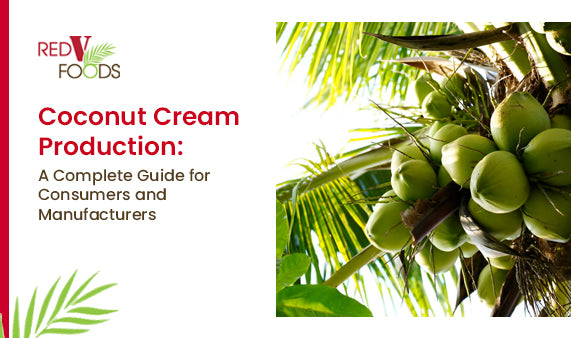
Coconut cream, a highly versatile ingredient known for its rich flavor and creamy texture, has found a significant place in both the culinary and beauty industries across the globe.
In 2023, the global coconut cream market was valued at $2.92 billion, with projections anticipating it will reach a massive $4.67 billion by 2030. A key factor driving the rising demand for coconut cream is the rapid consumer shift towards healthy, natural alternatives in both food and skincare.
As consumers become more conscious of what they consume, there is increasing preference for products that are beneficial and sustainably produced. This growing awareness places a spotlight on the production process, which plays a crucial role in determining both the quality and sustainability of the final product.
Each step in the production process — from sourcing to packaging — impacts the texture, flavor, and overall quality of the coconut cream.
By understanding how coconut cream is produced, consumers can make more informed choices, selecting products that align with their personal values and expectations for quality.
Keep reading to explore the intricate production process and discover how coconut cream is carefully crafted from start to finish.
Coconuts thrive in tropical regions like Southeast Asia and Pacific Islands, specifically in countries like Indonesia, the Philippines, Thailand, and India. Coconuts thrive within ideal temperatures between 20 to 32°C, abundant rainfall with 2,000 to 2,500 mm, and well-drained soil ranging in pH from 5.0 to 8.0.
Meanwhile, the preferred relative humidity level is between 80% to 90%, where humidity below 60% can potentially cause premature fruit dropping.
Coconuts grown in regions with abundant sunlight and rainfall tend to carry higher oil content, resulting in a creamier and more flavorful coconut cream.
Traditional coconut harvesting is a labor-intensive process that has been practiced for centuries in regions like the Philippines and India. This method involves skilled climbers scaling tall coconut trees to manually cut down mature fruits.
A skilled climber will ascend the tree, using a rope tied around their feet and ankles for support. Once at the top, they will carefully tap a nut at the base to assess its maturity.
If satisfied, they will cut the bunch, allowing it to fall to the ground. If the ground is hard or the coconuts are tender, they will be lowered gently using a separate rope.
Modern coconut farming has incorporated innovative techniques to improve efficiency and yield without compromising quality. Mechanized harvesting equipment, such as hydraulic lifts and specialized cutting tools, can expedite the process and reduce the risk of injury to workers while increasing efficiency..
In a collaborative effort, TNAU, Coimbatore, and M/s Vanjax, Chennai, developed a tractor-mounted aerial access hoist to streamline coconut harvesting. This innovative machine can reach 15 meters and access four trees from one position.
The traditional process of extracting coconut cream involves a series of manual steps:
Traditional coconut cream extraction often produces thicker, more textured consistency, and may help to preserve the nutritional content of the coconut meat due to the less invasive manual process.
In recent years, technological advancements have led to the development of more efficient and consistent methods for extracting coconut cream:
Modern extraction techniques, using advanced technologies, offer increased yield, improved consistency, and greater scalability, making them ideal for commercial coconut cream production.
The production of coconut cream involves meticulous processing and packaging steps to ensure quality and safety.
Coconut cream is subject to international standards and certifications that ensure its quality, sustainability, and ethical production.
Sustainable coconut farming prioritizes environmental protection and social equity. This includes techniques such as:
Companies like Red V Foods play a crucial role in promoting sustainable coconut farming and corporate social responsibility by:
Understanding the production process of coconut cream is crucial for consumers who value quality, sustainability, and ethical practices. By being aware of the factors that influence the final product, consumers can make informed choices and support responsible brands.
As a leading supplier and manufacturer of coconut cream in the United States, Red V Foods is dedicated to sustainable practices, ethical sourcing, and rigorous quality control. Our commitment ensures that the coconut cream you need meets the highest standards.
Get in touch with us today to experience the exceptional quality of our coconut products!
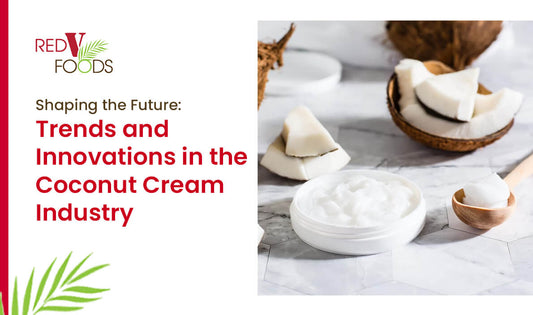
The coconut cream industry is expanding with a 7.2% projected CAGR, driven by plant-based diets, health benefits, and versatile applications. ...
The coconut cream industry is expanding with a 7.2% projected CAGR, driven by plant-based diets, health benefits, and versatile applications. ...
Read More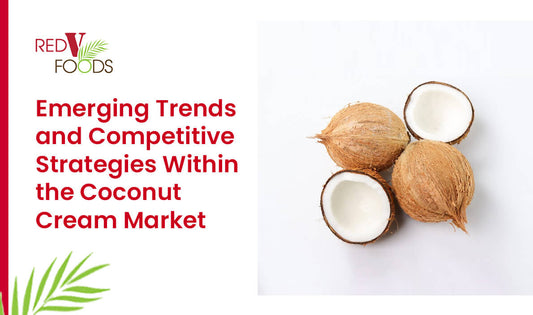
The coconut cream market has seen significant growth, particularly in Southeast Asia, but North America is fastest-growing, with a projected...
The coconut cream market has seen significant growth, particularly in Southeast Asia, but North America is fastest-growing, with a projected...
Read More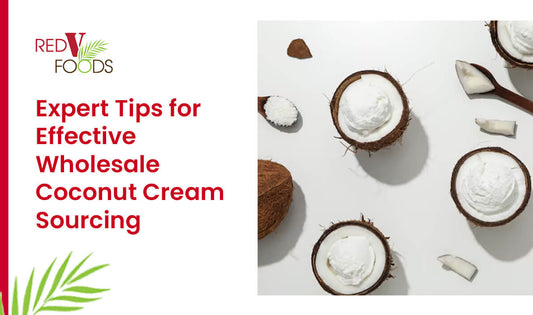
Buying coconut cream in bulk offers significant cost savings, ensures consistent product quality, and reduces waste, making it ideal for...
Buying coconut cream in bulk offers significant cost savings, ensures consistent product quality, and reduces waste, making it ideal for...
Read More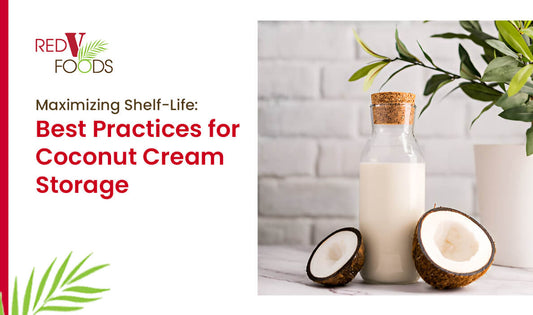
Coconut cream, due to its high water and fat content, is highly susceptible to spoilage. Proper storage practices, including refrigeration...
Coconut cream, due to its high water and fat content, is highly susceptible to spoilage. Proper storage practices, including refrigeration...
Read MoreLife is better with coconuts! Reach out to learn more about how we can supply you with this tropical delight.